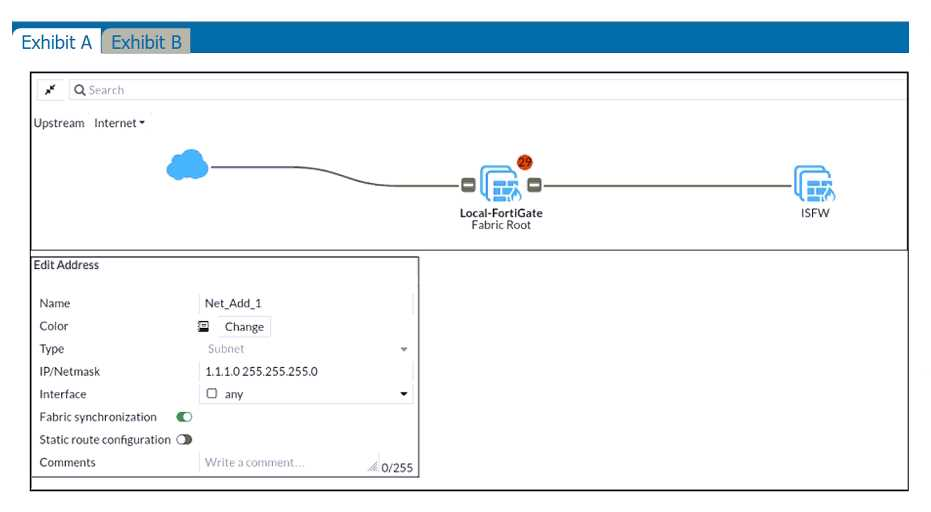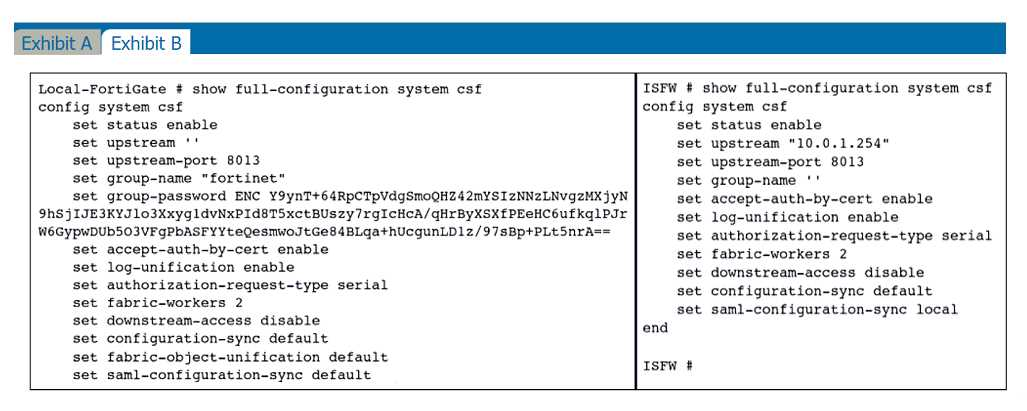Refer to the exhibits.


An administrator creates a new address object on the root FortiGate (Local-FortiGate) in the security fabric. After synchronization, this object is not available on the downstream FortiGate (ISFW).
What must the administrator do to synchronize the address object?
- Change the csf setting on ISFW (downstream) to set configuration-sync local.
- Change the csf setting on ISFW (downstream) to set authorization-request-type certificate.
- Change the csf setting on both devices to set downstream-access enable.
- Change the csf setting on Local-FortiGate (root) to set fabric-object-unification default.
Answer(s): C
Reference:
https://docs.fortinet.com/document/fortigate/6.4.5/administration- guide/880913/synchronizing-objects-across-the-security-fabric